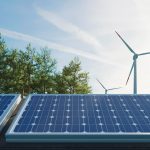The United States recorded growth in community solar energy (also known as community solar) during 2024, when a total of 1.7 gigawatts (GW) of new capacity was installed nationwide. This represents an increase of about 35 percent compared to the previous year, bringing the total capacity of community solar power plants in the US to 8.6 GW.
Community solar energy refers to a model that allows multiple individuals or businesses to share the benefits of a single solar system, even though the panels are not necessarily installed on every user’s property. Instead, they have the option to subscribe to a portion of the output from a solar park located elsewhere. Citizens who live in buildings without access to a roof suitable for solar panels, or those who cannot afford the initial installation costs, can still benefit from solar technology through community solar.
More:
- World Energy Day – From Initiative to Ambitious Goals for Green Energy
- Baltic States Synchronize Power Grids with the EU and Leave the Russian System
- India Sets Ambitious Goals: 500 GW of Clean Energy by 2030
New York, Maine, and Illinois – each individually broke their own records and together accounted for over 80 percent of the total new installations. An analysis conducted by Wood Mackenzie and the Coalition for Community Solar Access (CCSA) states that this surge is partly due to stable state programs, particularly the support mechanisms that were active at that time. At the same time, new states entering the field of community solar energy—such as Pennsylvania, Ohio, and Georgia—are still establishing legal and regulatory foundations, so their projects are not yet ready to immediately offset any potential decline in the more established centers.
Forecasts from Wood Mackenzie indicate that the annual growth rate of community solar may decrease by about eight percent on average by 2029, but the total capacity could still rise to 15 GW.
The potential of community solar is especially highlighted for low-income households, which often do not have the means to independently finance solar systems.
Energy Portal



